The cuboctahedron
The cuboctahedron is, among the Archimedean solids, the only one whose radius (the distance from its center to its vertices) equals the length of its edges. This means that rods could be used to join its vertices with a central ball. As it has 12 vertices, as many as 12 rods could be used. The result is the reinforced cuboctahedron shown in the left-hand picture.
These inner rods also show that the inner space of the cuboctahedron could be split into eight regular tetrahedra (corresponding to its eight triangular faces) and six square pyramids (corresponding to its six square faces). If we fill each tetrahedron with four balls, we will get the object shown in the right-hand picture, a very good paperweight at more than 500 grams.
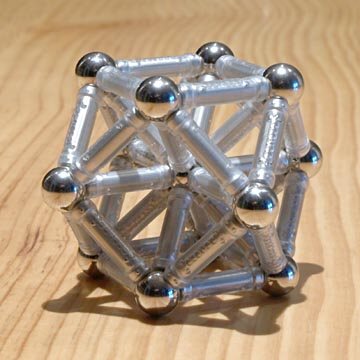
Cuboctahedron reinforced with internal rods
49 pieces: 13 balls, 36 rods (281.00 g)
|
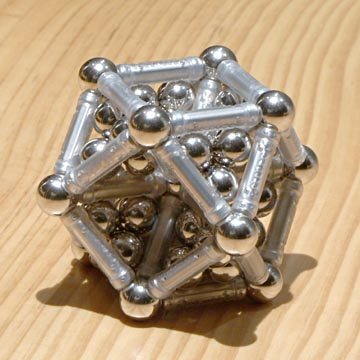
Cuboctahedron reinforced and filled with balls
81 pieces: 45 balls, 36 rods (556.20 g)
|
By doubling the scale of the tetrahedra, the cuboctahedron is also doubled:
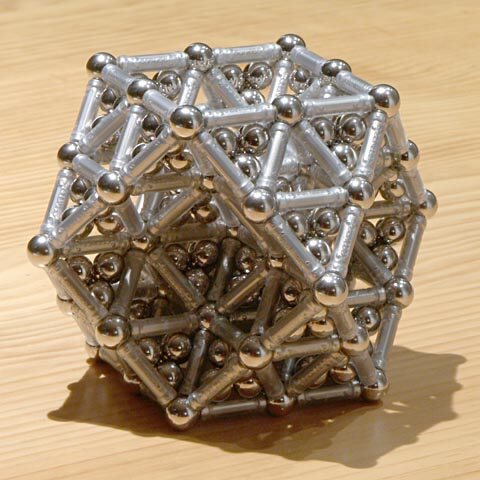
Double-scale filled cuboctahedron
345 pieces: 177 balls, 168 rods (2.31 kg)
|
We can also make a «Sierpinski cuboctahedron», just by building it with Sierpinski tetrahedra:
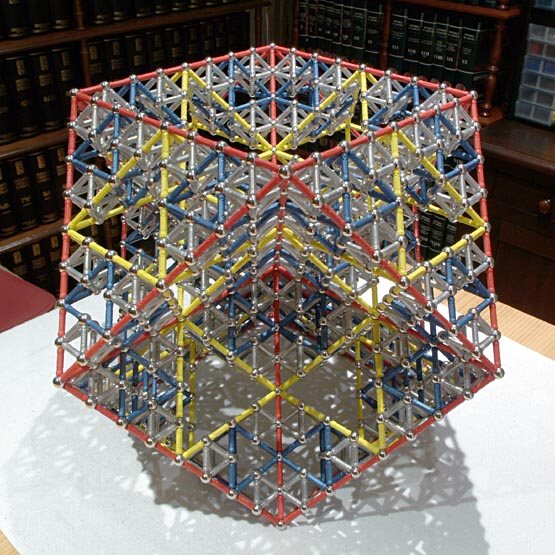
Sierpinski cuboctahedron (third iteration, scale 8), view 1
3913 pieces: 937 balls, 2976 rods (22.05 kg)
|
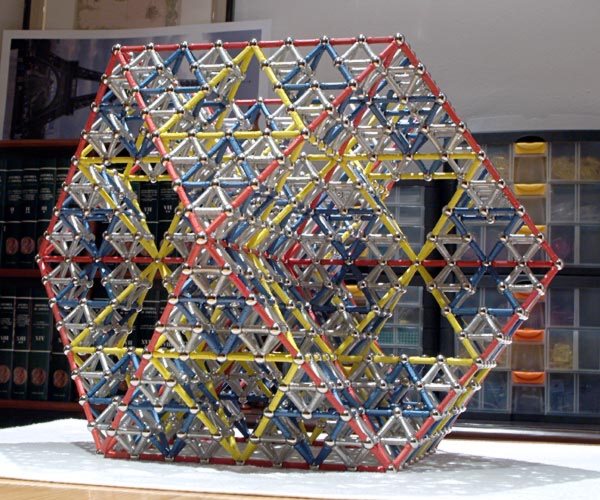
Sierpinski cuboctahedron (third iteration, scale 8), view 2
|
- The cuboctahedron is very useful for building columns with a square base, as in Chapel 2, or with a triangular or hexagonal base, as in Chapel 5, or this version of the Brussels' Atomium.
- It is also very versatile for building several structures.
- MathWorld article on the cuboctahedron.